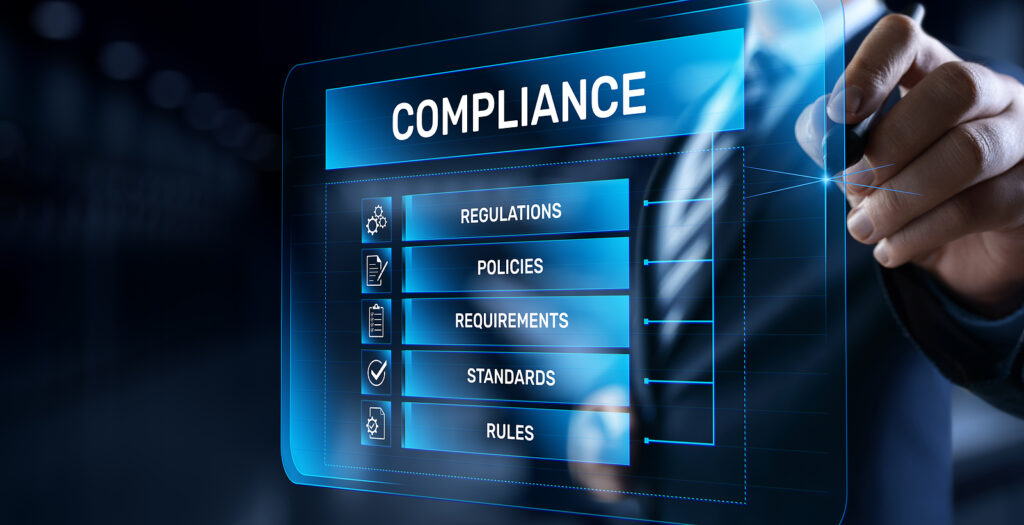In 2020, 75% of cyberattacks exploited vulnerabilities that were at least two years old. That points to a severe lack of vulnerability assessment and management, which significantly increases risk for organizations.
For those industries that are compliance-focused, a lack of vulnerability assessment and management can lead to higher chances that a data breach will occur. Additionally, the penalties can be increased.
Regulations like the Health Insurance Portability and Accountability Act (HIPAA), the General Data Protection Regulation (GDPR), and the Defense Federal Acquisition Regulation Supplement (DFARS) often increase penalties if negligence is identified.
Negligence can include not securing data according to best practices and in compliance with regulatory requirements. Vulnerability management is a support mechanism for compliance because it reduces the risk of a cyberattack significantly.
Approximately 60% of data breaches are caused by unpatched vulnerabilities being exploited.
Compliance-focused industries are some of the most attacked and often have the highest costs. The top five industries with the highest average cost for a data breach are:
- Healthcare – $10.1 million
- Financial – $5.97 million
- Pharma – $5.01 million
- Technology – $4.97 million
- Energy – $4.72 million
Following, are some steps that can be taken to introduce and implement vulnerability management in industries that are under strict compliance requirements.
Educate Leadership on What Vulnerability Management Is
Before implementing vulnerability management in a compliance-focused organization, it’s important to get leadership buy-in and support. Otherwise, the IT department may not get the resources it needs to deploy a vulnerability lifecycle effectively.
Explain what vulnerability assessment is and how it connects to ongoing vulnerability management. “Vulnerability” can be a vague term, so it’s best to put it into a context that makes sense from a compliance standpoint.
You could, for example, note the Log4J vulnerability that impacted multiple applications throughout all industries was referred to by the director of the Cybersecurity and Infrastructure Security Agency (CISA) as “The most serious vulnerability that I’ve seen in my decades-long career.”
Experts in the energy sector noted that it could be months to years before that vulnerability is fully addressed and the entire impact is known.
Make the Connection Between Vulnerabilities and Compliance Risk
Vulnerabilities directly connect to compliance risk. An unchecked vulnerability can enable a ransomware attack, account takeover, DDoS attack, database breach, and multiple other cyber incidents.
Ensuring vulnerabilities are detected throughout all systems and endpoints so they can be remediated reduces the risk of a data breach.
Map Out Where the Vulnerability Lifecycle Fits within the Compliance Strategy
Organizations that are focused on following compliance requirements will generally be following a specific framework for cybersecurity activities. The best way to implement vulnerability management is to find where it fits within that framework.
Most frameworks will include the need to keep systems patched and to identify network threats. These are places where vulnerability management fits and supports the compliance activities already in place.
By fitting the vulnerability lifecycle into an existing compliance process, there is less disruption to current strategies. Rather than being “something else the IT department has to worry about,” it can be a welcome tool to improve a process they are already responsible for.
Identify a Solution to Automate the Vulnerability Management Process
Vulnerability management needs to be as fluid as possible. Software, device, and system updates are occurring all the time, which means new vulnerabilities are being introduced. If you are trying to assess, prioritize, mitigate, and document vulnerabilities manually, it’s easy to get behind or miss a dangerous threat.
Identify a solution, such as CyberWizPro by WizNucleus, that will automate this entire process. Automating vulnerability management reduces the burden on the IT team, and eliminates the human error component that can cause threats to go undetected or take too long to get patched.
This type of software makes it easy to monitor for vulnerabilities across your entire network and all devices, applications, and other components.
Document Vulnerability Management Activities to Aid Compliance Requirements
Document the vulnerability management process to show the actions taken to mitigate risk. This is important compliance documentation as it details any vulnerabilities found, when they were found, and when they were addressed to mitigate the risk.
Having a well-documented vulnerability management process can reduce penalties in the case of a data breach by backing up your efforts to protect company networks and data. Reporting from an automated vulnerability management system is generated automatically, making it easy to keep this type of documentation to improve compliance reporting.
Is Your Compliance Program Missing Vulnerability Management?
Many data breaches are caused by unpatched vulnerabilities. Introducing a vulnerability lifecycle management strategy to address this problem can significantly boost compliance efforts.
CyberWizPro by WizNucleus is an easy-to-use application that can expedite this process. Download a free trial today!

